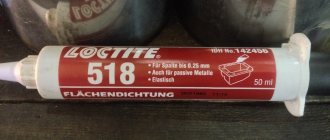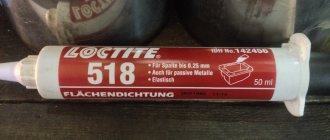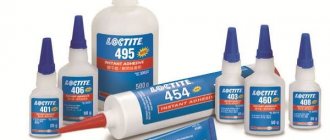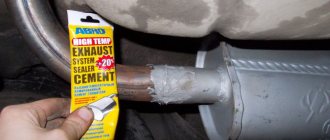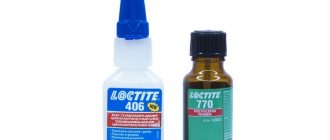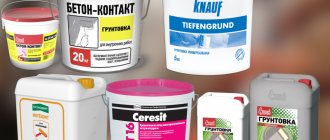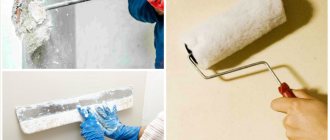When repairing cars, car owners use various sealing compounds that act as fasteners and sealants, which are used as a gasket material or to secure threaded connections. Modern, high-quality loctite sealant from Henkel is produced in a large assortment. The product line of this manufacturer includes sealants for various purposes; the products are used for the repair of vehicles, various components and machine parts, including transmission elements, craters, covers, pallets, cylinder heads, and many other auto elements.
Methods for applying Loctite threadlockers (Loctite)
To achieve optimum performance, all parts must be clean and free of grease. You can use Loctite 7063 cleaner for this.
For use on inactive metals such as stainless steel or aluminum, it is recommended to pre-treat the surface with Loctite 7649 activator.
Through holes
- Clean the bolt and nut threads with Loctite 7063.
- If necessary, apply Loctite 7649 to the threads. Allow to dry.
- Insert the bolt into the through hole.
- Apply a few drops of locking compound to the threads of the bolt where the nut will be installed.
- Screw and tighten the nut.
Blind holes
- Clean the bolt and nut threads with Loctite 7063.
- If necessary, apply Loctite 7649 to the threads. Allow to dry.
- Apply a few drops of fixative to the internal threads of the blind hole.
- Apply a few drops to the outermost threads of the bolt.
- Assemble and tighten.
Blind holes (studs)
- Clean the bolt and nut threads with Loctite 7063.
- If necessary, apply Loctite 7649 to the threads. Allow to dry.
- Apply a few drops of Loctite 262 or 270 (2701 for inactive materials) to the internal threads of the blind hole.
- Apply a few drops of Loctite 262 or 270 (2701 for inactive materials) to the outer threads of the stud.
- Assemble the connection and install the necessary parts.
- Apply Loctite 243 or 222 to the free edge of the stud threads.
- Tighten the nut.
Application after assembly
- Clean bolt and nut threads with Loctite 7063
- Assemble the connection
- Tighten the nut
- Apply a few drops of Loctite 290 threadlocker to the bolt and nut joint
- Try not to touch the tip of the bottle to the metal.
Fixing the set screws
- Adjust the screw to the required position
- Apply a few drops of Loctite 290 threadlocker to the bolt and nut joint
- Try not to touch the tip of the bottle to the metal.
Application of paste-like thread lockers (Stick, “stick” packaging)
| Apply to the thread surface | Replace the cap after use. |
| Example of using paste threadlockers | ||
| Application of Loctite 248 | Application of Loctite 268 | |
Disassembly of high strength joints
- Heat the connection requiring disassembly to 230°C for 5 minutes
- Disassemble the connection
Note: disassembly of threaded connections mounted on low- and medium-strength threadlockers can be done without heating.
Important!
- Some anaerobic Loctite locks (in liquid form) have a positive effect on the coefficient of friction in threads during installation, comparable to bolt lubrication. This property makes it possible to use these products on automatic production lines using existing assembly equipment. However, it must be noted that the prestress and tightening torque must be determined.
- All Loctite pre-applied products are water-based with no solvents included and are therefore non-flammable and non-toxic. For ease of recognition they are painted in bright colors. They have a long shelf life when applied to the thread. When dismantling threaded connections with encapsulated thread locker, liquid anaerobic locking agents can be used for subsequent reassembly.
How to remove BF glue
The medical version of the glue dissolves on its own within 2-3 days. Or the elastic film can be easily removed if you pick it up on one side and gently pull it up.
To remove technical compounds, you can use a mechanical method (if the surface allows). If there is a risk of damaging the surface, use alcohol or acetone-containing liquids.
To do this, moisten the cloth with alcohol or acetone and apply liberally to the area of the adhesive stain. Leave for 20–30 minutes. Then apply solvent again and carefully clean off with a rubber spatula or flat plastic piece.
Selection and application of Loctite (Loctite)
Many factors can affect the tightness of a connection, especially its service life. The required type of sealants should be carefully selected for maximum reliability and durability. In many systems and environments, leakage of oil and other substances is unacceptable. Threaded connections may be subject to strong vibrations during operation, the connection may be affected by chemicals, not constant pressure and strong temperature changes. A threaded connection may leak if the working surface is not smooth enough and has roughness. The sealant must have the required level of wetting to maximize the coverage area of the joint. The thread diameter is also important; The seal designed for fittings with a diameter of 8 mm cannot be used on 80 mm fittings. Many sealing materials do not completely fill the thread gap. In this case, sealing is carried out only due to the high pressing force of the mating working sides and pressing the product into the micro-irregularities of the threaded surface. Dry-sealed joints operate under constant contact stress. However, in dynamic connections this is often impossible to achieve for three reasons:
- Pipe connections are often heated to create special bends, elbows, or to fit pipes, thereby reducing contact stress.
- Vibration can cause movement and wear of the thread flanks at the weakening point. Flexible connections such as hydraulic hoses are especially susceptible to this.
- Relative movement of the joined parts can force the tape sealants out of the joint.
- Loctite anaerobic sealants completely fill threaded gaps, creating a complete sealing of the connection.
Properly selected Loctite sealant provides the necessary strength of the connection, which prevents relative movement of the parts being connected, which in most cases is the cause of leakage.
Distinctive features of the brand
The popular brand Loctite was created in the USA. The adhesive was derived from scientific research into adhesives. Developments were also carried out to create their solvents. An innovative breakthrough was the solution, which was used to fix screw connections. With its help, it was possible to completely engage the threaded parts.
In the late nineties, the Loctite brand was bought by Henkel. All rights to the results of scientific research were transferred to her. However, to this day Loctite is considered a successful division of the company. It produces adhesives for various materials.
Assembly and dismantling
Loctite anaerobic sealants can be applied manually or using automatic or semi-automatic equipment. Excess Loctite product can be easily wiped off or washed off the surface. Traditional pipe compounds are difficult to assemble due to their slow action, inability to ensure clean installation, and the need for a specific tightening force to ensure optimal contact stress. Applying PTFE tape requires skill to avoid overstressing in threaded pipe connections and body castings. Loctite thread sealants provide quick, clean assembly and are easy to apply directly from original containers or dispensers. When assembling cylindrical or tapered threaded connections, sealant must be applied to both external and internal threads. Anaerobic products fill threaded gaps, making the tightening force of connections less critical. Loctite sealants also allow easy removal for subsequent repairs due to the absence of corrosion and galling in the threads. This connection cannot be penetrated by moisture or corrosive chemicals. Although Loctite sealants also have locking properties, they all allow threaded connections to be removed using conventional tools.
Pre-application of Loctite thread sealants
Loctite has a wide range of thread sealants available, mainly divided into locking and non-locking thread sealants for pre-application. They are used in production assembly lines with heavy loads, reducing the requirement for additional equipment modification. These sealants are used to seal most connections with both external and internal threads, which increases the profitability of production, saves time and guarantees the accuracy of applying the product to each assembly unit in a strictly defined place. Loctite (Dri-Lock) locking sealants contain microcapsules with an airtight coating. When assembling parts, these microcapsules are destroyed, which leads to leakage of the active component. Then the product polymerizes like liquid anaerobes and acquires similar properties (strength, heat resistance, chemical resistance). Loctite non-locking thread sealants are known as Dri-Seal or vibration sealing products. This tack-dry, non-curing coating provides an instant seal and is easy to remove. All pre-coat products are water-based and solvent-free. They are fireproof and non-toxic. For ease of identification, all these products are painted in bright colors. These sealants have a long shelf life when applied. All pre-applied thread connections can be reused with appropriate liquid anaerobic threadlocker or Loctite sealant. Almost all types of threaded fasteners are suitable for pre-application of sealant.
*Check our consultants for current prices.
Varieties of adhesives from a leading German manufacturer
The products of the German concern Henkel Group, which occupies a leading position not only in the domestic but also in the world market, are widely represented in Russia.
Henkel Group's line of Loctite adhesives includes a wide range of products with very different formulations - from cyanoacrylate, acrylic, polyurethane to epoxy, butyl and ultraviolet curing.
Loctite adhesives with an organic and inorganic base, single- and multi-component, as a rule, have a wide range of applications and can glue various types of homogeneous and dissimilar materials.
You can select Loctite glue and view the full range of products on the website loctite.masterkley.ru/catalogue/klei/.
Typical Applications
In accordance with the manufacturer’s recommendations, adhesive solutions for universal and specialized purposes can be distinguished. Therefore, the scope of application of Loctite brand adhesives is very wide:
- Bonding objects made of rubber, plastic, textiles, cardboard and alloys.
- Fixation of threaded connections.
- Sealing of screw parts.
- Protection of connecting surfaces from corrosion, chemical agents, high pressure, vibration, temperature changes.
- Protection of complex structures from leaks of technical liquids and gases.
- Sealed installation of bushing elements in cylindrical holes, with rigid fixation.
- Repair and installation of metal structures.
- Protection against premature wear of industrial ventilation equipment.
We recommend videos on the topic:
Brief description of the brand
Loctite is a brand with extensive experience in producing effective adhesives. Among the assortment of this company you can find adhesives for almost all materials existing today.
Their use opens up unique opportunities for humans in the field of joining difficult-to-glue materials.
Combining excellent performance characteristics and affordability, loctite adhesives have become very popular in the domestic market. They provide reliable and fast bonding of a wide range of different materials: metal, plastic, elastomers, rubber, porcelain, etc. In addition, they do an excellent job with wooden, leather or textile products.
Loctite glue
For maximum effectiveness of the substance, the surfaces to be bonded will need to be cleaned and degreased using special products. And excess glue is removed using nitromethane or acetone.
Species diversity
The Loctite brand produces not only glue and various adhesive components, but also technical compounds to protect and ensure the functionality of moving mechanisms. The main types of Loctite brand products are:
Loctite screw sealing compounds. These are liquid solutions or tapes for sealing screw connections. They penetrate into the spaces between threaded parts and form an impenetrable layer. Loctite sealant prevents unscrewing of fittings and leakage of technical components. Loctite thread sealants have the following characteristics:
- withstands prolonged exposure to high and low pressure;
- do not crack due to temperature changes;
- have high adhesive properties to metals and plastics;
- are produced in the form of one-component anaerobic, silicone solutions or sealing tape;
- do not shrink, protect against corrosion;
- do not dissolve in oils, gasoline, alkalis.
Flange sealing compounds. When applied, they polymerize and create a sealed seam in the space between the parts. Protect mechanisms from leaks of liquids and technical gases. In addition to the sealing layer, they create a protective coating against corrosion.
Flange sealants have the following characteristics:
- do not react to the influence of technical gases and reagents;
- do not crack under significant changes in pressure and temperature;
- are available in the form of anaerobic and silicone solutions;
- do not shrink or expand;
- anaerobic ones create rigid adhesion, silicone ones are used for moving parts;
- thanks to its liquid consistency, it fills microholes and cracks and distributes itself between surfaces;
- when applying there is no need to further tighten the thread;
- can replace gaskets made of other materials.
Elastic industrial seals Loctite. Protect parts of mechanisms from moisture, air, solid particles, and gases. They form a movable seam that is resistant to displacement and tearing.
- When deformed, Loctite seals return to their original shape.
- Available in the form of one-part and two-part liquids.
- They have high adhesion to materials of different densities and textures.
- Do not crack at low temperatures.
- They are not destroyed by exposure to air, ultraviolet radiation, or water.
- High vapor permeability.
Description of sealants
Henkel has been producing quality Loctite sealants since 1997. The products of this manufacturer include a wide range of different production processes; sealants are often used in the automotive industry. Over many years of successful work, the company’s specialists have developed innovative technologies for manufacturing sealing products using unique formulas. Here is a list of the main advantages of Loctite sealants:
- a wide range of products for high-quality and reliable sealing of auto parts;
- high performance indicators of loctite sealants in comparison with traditional gaskets and seals;
- significant extension of the operational life of sealed objects;
- excellent adhesion (adhesion) to various metals, such as aluminum, cast iron, iron, steel, and plastic parts;
- minimum period of setting and hardening;
- efficiency of complete polymerization;
- ease of application of Loctite sealants;
- wide temperature range in which sealants can be used; the company produces high-temperature compounds.
By using Loctite sealants instead of conventional gaskets, automotive parts are effectively protected from leaks, and the load-bearing load is evenly distributed across the mechanisms and components of the car. Loctite sealants are manufactured using innovative formulas, thanks to which these gels make the best and most reliable contact over the entire surface, at every point where the composition was applied.
It is important to note that Loctite sealants are much more effective than conventional compression gaskets. In addition, the use of sealant has better properties and characteristics than soldered or welded seams, and is more effective than pressing parts.
A little about Loctite
The sealant went on sale in the middle of the last century and quickly gained the trust of people. Consumers highly appreciated its quality and performance characteristics.
The creator of this product, chemist Vernon Krible from Harford (Connecticut, USA), experimented with ester polymerization inhibitors. He wanted to cure in an airless space, which led to the creation of anaerobic glue.
Further work led to the creation of a material called a “liquid locknut.” It eliminated the problem of unscrewing and provided high-quality and durable fastening. This was an excellent solution for securely securing threaded connections.
This is how Loctite was born. During subsequent experiments, the range of sealants expanded significantly, and additional products with similar or different performance appeared. An example is the world famous superglue. The compositions were created on a diverse basis:
The world saw cyanoacrytal and anaerobic agents with a wide spectrum of action. An important achievement was the polymerization of one-component compositions, which expanded the range of applications.
Another development spiral was set in 1997, when the Loctite company was acquired by the world-famous Henkel concern. The corporation retained the original name of the sealant, but made it even more reliable, practical, durable and affordable.
How to properly apply sealant for engine repair?
For the most effective results, you need to use the sealant according to the rules. The most important thing is to first clean the surface on which the mixture will be applied. Dirt and remnants of old gaskets must be removed from the coating. Such work must be done very carefully, since one awkward movement will damage the coating and cause defects.
After cleaning, the coating must be degreased. To do this, you can use gasoline or another solvent.
The strip should lie flat and should not be interrupted. The thickness of the seam should be within seven millimeters. After applying the composition, you can join the surfaces.
Types of compositions
The variety of the entire line of Loctite sealants is amazing. On the shelves of construction/hardware stores you can find compounds labeled with the following values:
The rich assortment led to the popularization of the product, and now Loctite is actively used to solve a variety of problems. It is suitable for industrial and private needs, and its reasonable price makes it accessible to a wide range of consumers.
Threaded fasteners
These compounds prevent self-unscrewing of hardware. They are used to securely and quickly connect fasteners, providing excellent sealing.
The main advantage of semi-solid and viscous products is that they fill all available space, eliminating the possibility of leakage of liquid and gaseous media.
Polymerization occurs at room temperature. Threadlockers are great for working with metal joints because they are known for their high adhesion. Other advantages of these funds include:
- vibration resistance;
- durability;
- practicality of connection;
- effective elimination of leaks on various threaded connections;
- wide range of operating temperatures.
Among the entire model range, the most popular are those labeled:
Loctite sealant is known for its economical consumption. Threadlockers are easy to apply and do not require additional tools.
Thread sealants
They deserve the most attention. Having a special composition, these products provide complete sealing of the thread. Liquid and gases do not leak even through small cracks and openings, which makes it possible to do without FUM tape, tow and other devices.
Loctite provides reliable sealing of threaded connections. The liquid, but moderately thick consistency efficiently fills gaps, eliminating leaks.
The advantages of Loctite sealant for threaded connections include:
- preservation of properties at elevated temperatures;
- low pressure after application;
- Excellent load resistance once fully cured.
For ease of use, this composition is also available in the form of a sealing thread. Loctite anaerobic sealant polymerizes even in a vacuum when in contact with metal. Silicone cures at room temperature. This is facilitated by the moisture contained in the air.
Loctite is classified by application:
- anaerobic - for metal pipes;
- silicone - for plastic threads;
- sealing thread - for conical connections made of metal and plastic.
Flange sealants
As the name suggests, these products are designed to seal flange connections. They are used on many utilities, including water and gas pipelines.
Loctite 518 sealant acts as an impermeable seal. Due to its expansion properties and good adhesion, it creates a reliable barrier between metal flanges without harming their fastening.
The advantages of this tool include:
- resistance to high medium pressure in the line;
- high-quality and fast compaction without residual shrinkage;
- tightness of the coating;
- immunity to aggressive environments;
- uniform filling throughout the available space.
Flange sealants are more effective than conventional gaskets. They are favored by their long service life and the absence of the need for regular replacement. Loctite does not deform (the seal does not break) under heavy loads on the flange connection. In solid form, it does not leave the area even with strong pressure, which is constantly observed in utility lines.
Resistance to damage also plays an important role:
The practicality of these products is also affected by the wide range of operating temperatures: from –55 to +150 degrees Celsius. Loctite sealants 5188, 574 and 518 are suitable for steel, cast iron and aluminum flanges, and the red one in the syringe is ideal for sealing joints in cars.
Industrial sealants
Industrial products are known for their good performance. Loctite 5145 is able to withstand the movement of multiple parts without compromising the tightness of the joint. Known for high adhesion and extended service life. These qualities make Loctite products indispensable for industrial needs.
The scope of application of these funds is wide. Sealants are used to seal assemblies, as well as to connect various parts in complex mechanisms.
One- and two-component industrial sealants prevent moisture, gases, steam and small particles from penetrating into the joint. In addition, they are known for the following characteristics:
- good adhesion to most modern materials used for industrial needs;
- weather resistance;
- durability, and aging is not accompanied by deformation/cracking;
- immunity to caustic and aggressive chemicals.
Industrial sealants are silane-modified and butyl. Products of the second type have good adhesion even to glass, ceramic and other smooth surfaces.
Due to their high consumer qualities, Loctite industrial sealants are suitable for modeling/assembling light structures, reducing production costs and increasing the pace of work. They allow you to do without additional fastening devices.
Shaft/sleeve retainers
Loctite sealants in this group are designed for rigid fitting of cylindrical automotive parts, including shafts, bushings and bearings. Having good binding properties, sealants provide a reliable connection to the assembly and increase its load-bearing capacity.
The widespread use of these tools is also due to the correct distribution of the load throughout the entire node. This ensures the safety of mechanical components and reduces the likelihood of premature wear.
Sealants made on the basis of methacrylate are known for the following features:
- perfectly fill the gap;
- protect metal products from the harmful effects of moisture and prevent the development of corrosion processes;
- reduce mechanical fatigue of parts and increase the service life of the entire assembly.
Loctite 660 is the most popular among the line under consideration. This sealant has an activator, due to which full technological strength occurs 15 minutes after application. When cured, it forms a layer 0.5 mm thick.
Threaded
The fixing composition firmly holds the fasteners together and prevents them from falling out. These sealants are semi-solid solutions of high viscosity; they fill the thread slots, eliminating the gaps between the bolt and the place where it is screwed.
- Such sealants polymerize over a wide temperature range and can be applied to metal products.
- The compositions are often produced ready for use; they are resistant to vibrations and can completely eliminate the possibility of leakage.
Loctite sealants for threaded connections have more than twenty options, but Loctite 243 and Loctite 270 are recognized as the most popular.
Popular materials
The line of these products is very diverse, as is the price range. This allows you to choose the right product for each task or find a universal composition with a wide spectrum of action. For convenience and easy orientation, it is worth considering several of the most well-known models.
Loctite 5900
Popular one-component black sealant. Hardens at room temperature. Known for its increased resistance to motor oils. Among the advantages it is worth highlighting:
- no shrinkage and corrosion;
- wide temperature range - from –55 to +200 degrees Celsius;
- hardening at room temperature.
The sealant is intended for hydraulic and pneumatic connections. Suitable for filling metal threads that have small gaps.
Loctite 290
Well-known threadlocker with low viscosity and good strength. It has a smaller temperature range than Loctite 5900, but prevents loosening of the alignment of elements and the formation of leaks in the assembly. This sealant is suitable for M6 type connections and is actively used in carburetor screws, as well as in instrumentation.
Teroson MS 9220
Another equally popular remedy that deserves attention. The structural MS-polymer sealant has a one-component composition (cures upon contact with a moist environment). It has a characteristic black color and is used in the production of:
- automotive technology;
- railway cars;
- semi-trailers;
- sea vessels.
Teroson MS 9220 has excellent adhesion to galvanized steels, Teflon, glass, aluminum and other materials. Withstands short-term exposure to +120 degrees Celsius.
For flanges
The "flange" version of Loctite can be used to replace conventional gaskets. Thanks to this type of sealant, a barrier is formed between the flanges, eliminating the leakage of liquid or gas.
The main properties are tightness, high resistance to aggressive environments, uniform gaps, and no shrinkage.
- The company's flange products are better than conventional gaskets because the material does not deform under external loads.
- It has high resistance to tearing, cracks do not appear on it, and the composition does not wear out.
- The most popular among car owners is Loctite 15 gel, which comes in a syringe.
The product is universal and suitable for all parts.
Application rules
Before applying Loctite sealant, the surface must be completely cleaned of dust, dirt, moisture and oil stains. To remove carbon deposits, you can use a stiff brush, as well as various degreasers.
- Thread the tube into the gun.
- Squeeze out the gel and apply it evenly to the surface.
- Press the product tightly.
- If necessary, carefully remove excess sealant.
In the professional field, a sealant syringe is often used. It is applied without a gun and is immediately ready for use. This product is indispensable for service stations. Before further use of the mechanism or assembly, you must ensure that the sealant is completely cured and ready for use.
Recommendations for storing sealant
Loctite sealants are offered in two shades - orange and red. The preservation of the composition for a long time is ensured in sealed packaging at temperatures from +8 to +28°. Unused composition should not be poured back into storage containers.
Henkel brand products have a number of undoubted advantages; a wide range allows you to choose a sealant for a particular task. The price of the compositions cannot be called modest, but the quality of the products is also high.
Instructions for use
The use of Loctite products may vary depending on the composition and purpose of the substance.
Loctite 243
This is a one-part sealant that is used to seal threaded elements. It is characterized by high resistance to vibration or unscrewing. The substance is produced in the form of a spray equipped with a nebulizer.
Before applying to the elements, they should first be degreased and dried. If there is corrosion, parts are treated with abrasive.
401
This universal product can be used for paper or cardboard. It is also suitable for vulcanized rubber, suede, and leather. With the help of such glue it is possible to fasten textile elements. The substance is released in the form of a one-component liquid.
See also
Characteristics and types of cork glue, instructions for use
Before using the substance, it is recommended to degrease and dry the surfaces. Wooden elements should be cleaned and coated with primer. It is recommended to apply glue to both surfaces. This should be done in a thin layer of 2-3 millimeters. Then the elements should be connected and left for 24 hours at a temperature of +20-23 degrees.
406
This is a cyanoacrylate adhesive that is characterized by rapid polymerization. It is used when it is necessary to quickly fix elements made of plastic, rubber, or metal. The composition is also used for bonding alloys or polymers. It is recommended to apply the product to a cleaned and degreased surface. The thickness of the layer should not exceed 2-4 millimeters. Excess glue does not affect the quality of the adhesion, but increases the drying period.
It is recommended to put flat elements under a press for a day. This helps avoid deformation.
Maximum strength can be achieved after a day.
Shaft-sleeve clamp Loctite 638
This seal is used for cylindrical elements. It also helps secure the bearings. It is recommended to apply the substance to cleaned and dried elements.
496
This product is intended for metal. It has a long setting period - it takes 10-30 seconds.
3421
This is a two-component epoxy adhesive that has a low curing rate at room temperature.
480
This is a one-component adhesive that is fast-acting. It is characterized by reduced vapor release.
Tags: sealant, head, Priora
Comments 38
Good afternoon. What is the cost? How long does the syringe last?
Hello. The syringe is enough for the engine. But I always use my finger. And in Murzilka they write that you need sausage. But in my opinion, it works better with a finger, and it squeezes out less, and it sits tighter, and then you’ll tear the dick off. And when the sausage squeezes it out in all directions. And it does not always dissolve in oil. A syringe costs 150-200 rubles. The most normal one is carrot color, and it looks like there are bubbles inside. If there are no bubbles, then it’s a little worse
I bought some red one. At first I thought they were lubricating only the cylinder head (camshaft bed and cover), then I found this information.
“There are three places where, according to VAZ technical specifications, you need to use sealant
1) CYLINDER BLOCK - GASKET - CYLINDER HEAD 2) between the block head and the CAMSHAFT bearing cap 3) between the CAMSHAFT bearing cap and the cylinder head cover "
It turns out that you need to go to the block... The original source - I haven’t seen the recommendations.
Well he's red
no, under no circumstances should it be applied to the block. The cylinder head gasket will hold everything there.
I looked for more information, but there really is no mention of the block. I inspected the metal gasket for traces of sealant, there was nothing.
Yes, he can’t be there. It stretches for 4 lengths, after which even a pussy hair won’t fit through. Spare no expense and buy new cylinder head bolts. Because they stretch out. But if no one touched them before you, then you can leave the old ones
Hello. The syringe is enough for the engine. But I always use my finger. And in Murzilka they write that you need sausage. But in my opinion, it works better with a finger, and it squeezes out less, and it sits tighter, and then you’ll tear the dick off. And when the sausage squeezes it out in all directions. And it does not always dissolve in oil. A syringe costs 150-200 rubles. The most normal one is carrot color, and it looks like there are bubbles inside. If there are no bubbles, then it’s a little worse
